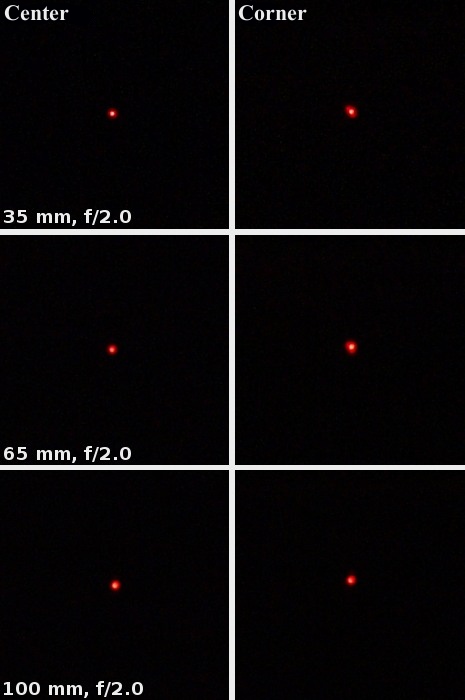Olympus Zuiko Digital 35-100 mm f/2.0
7. Coma and astigmatism
Please Support UsIf you enjoy our reviews and articles, and you want us to continue our work please, support our website by donating through PayPal. The funds are going to be used for paying our editorial team, renting servers, and equipping our testing studio; only that way we will be able to continue providing you interesting content for free. |
- - - - - - - - - - - - - - - - - - - - - - - - - - - - - - - - - - - - - - - - - - - - - - - -
Small sensor should help a lot when it comes to the correction of off-axis aberrations like the coma. As you can see in the crops below it is truly the case. The image of a diode put in the frame corner is just slightly deformed and it means that the coma won’t be very bothersome.

When it comes to astigmatism the situation is a bit worse. Here the size of the detector doesn’t matter as much as the right position of elements along the optical axis and their mutual cooperation. We deal with plenty of elements, many of them moving, so it is true that the standards were set very high. The Olympus 35-100 mm reached the result of 8.3% which is nothing to be ashamed of because it is good. We can just say that, being a bit more demanding, from a lens of this class we expected a result at the level of 5% or lower.






